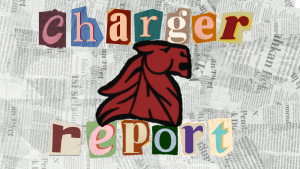China and the Vaccine: What We Don’t Know
September 20, 2021
March 13, 2020, will forever live in infamy as the day the United States shut down. Schools, businesses, travel, and production slowed down and quickly came to a halt as a whole. To get a better look at the whole picture, we need to jump back to December 31, 2019, when COVID-19 was first reported by the World Health Organization (WHO) in Wuhan, China. From then on, the highly infectious disease quickly spread all across the country, and eventually to the entire world.
What surprised many people across the world is that while most of the world went into panic and quickly went into a long shutdown, China did not. Being the source site of the pandemic, China quickly went into a “Zero Toleration” lockdown, which quickly and effectively ended the spread of the virus, and then got to work on the vaccine. China’s two main vaccines were manufactured by Sinovac and Sinopharm. What is different about these vaccines in comparison to the United States’ Moderna and Germany’s BioNTech (Pfizer) is that these vaccines are most effective when doses are given from both vaccines. Together, these vaccines give a 70 percent immunity against the virus. Although this number isn’t as impressive as Moderna and BioNTech, both with approximately 95 percent immunity, China’s vaccines have been proven to have 100 percent effectiveness in preventing serious illness and death if the patient were to contract COVID-19.
That stunning statistic has been a standout among other vaccines, which is why it was the first choice of neighboring countries, as well as less developed countries in need of a vaccine. China’s mass industry led to a rapid mass production of the vaccines. With their current capabilities, they are able to produce up to 5 billion doses of vaccines per year. This is a very large outflow of vaccines which would provide aid to many countries that could not provide for themselves. That was, until December, 2020, when the whole game changed.
The Delta Variant strain of COVID-19, which is about twice as contagious and even more deadly than the original, Alpha, strain of the virus. The discovery of this sent many areas of the world into a panic, under the impression that they would go back under lockdown. They feared that businesses, schools, and transportation would once again be shut down due to the fear of the virus taking over. While all this is true, it didn’t lead to that much of a problem. The COVID-19 vaccines have continued to prove effective in preventing the spread of the virus, as well as limiting hospitalizations. Except in the instance of China. Studies have shown while China has been successful in preventing the spread of the virus in the past, the new challenges that the Delta Variant presents has bested China’s protocols, and the vaccine. Recently, cases have been increasing dramatically, despite China’s best efforts, including their hard lockdown. In a recent study, China’s vaccines have been tested against other vaccines, including Russia’s Sputnik V, Germany’s BioNTech, and the U.K.’s AstraZeneca. The results showed that China’s Sinopharm and Sinovac have had significantly more breakthrough cases of the Delta Variant, proving a lack in effectiveness. Countries surrounding China are becoming less reliant on Sinovac and Sinopharm, and are turning to other vaccines that are more effective.
With all the chaos going on in the world because of the pandemic, lots of people are wondering what they can do to help. The truth is, the best way to help out your community – and the world – is to simply wear a mask and get vaccinated with either the BioNTech Pfizer or Moderna vaccines. These methods have been proven to be the best at stopping the spread of the virus, and keeping you and your loved ones safe and healthy. Most health clinics have made the vaccine free, and available to most everyone, so you can do it whenever you are able to. Follow local regulations and mandates pertaining to the virus. And stay safe out there. It takes all of us to keep us all safe.
Image courtesy of BBC
Information courtesy of Fortune.com and MedicalNewsToday.com







